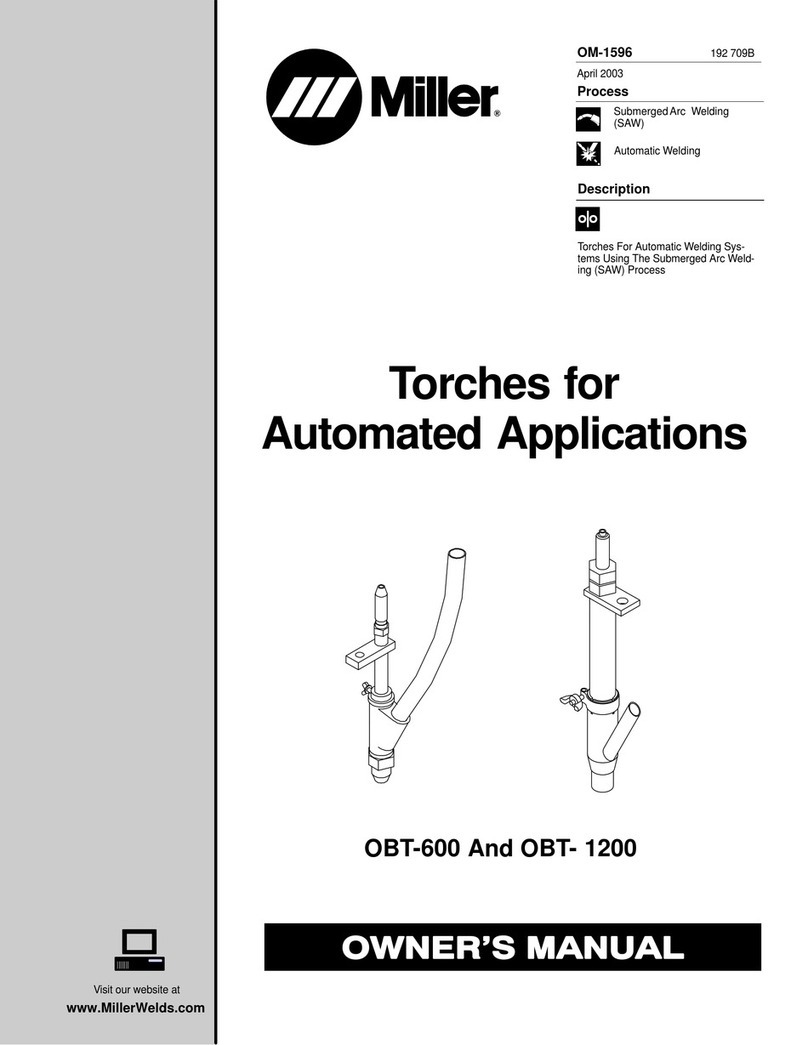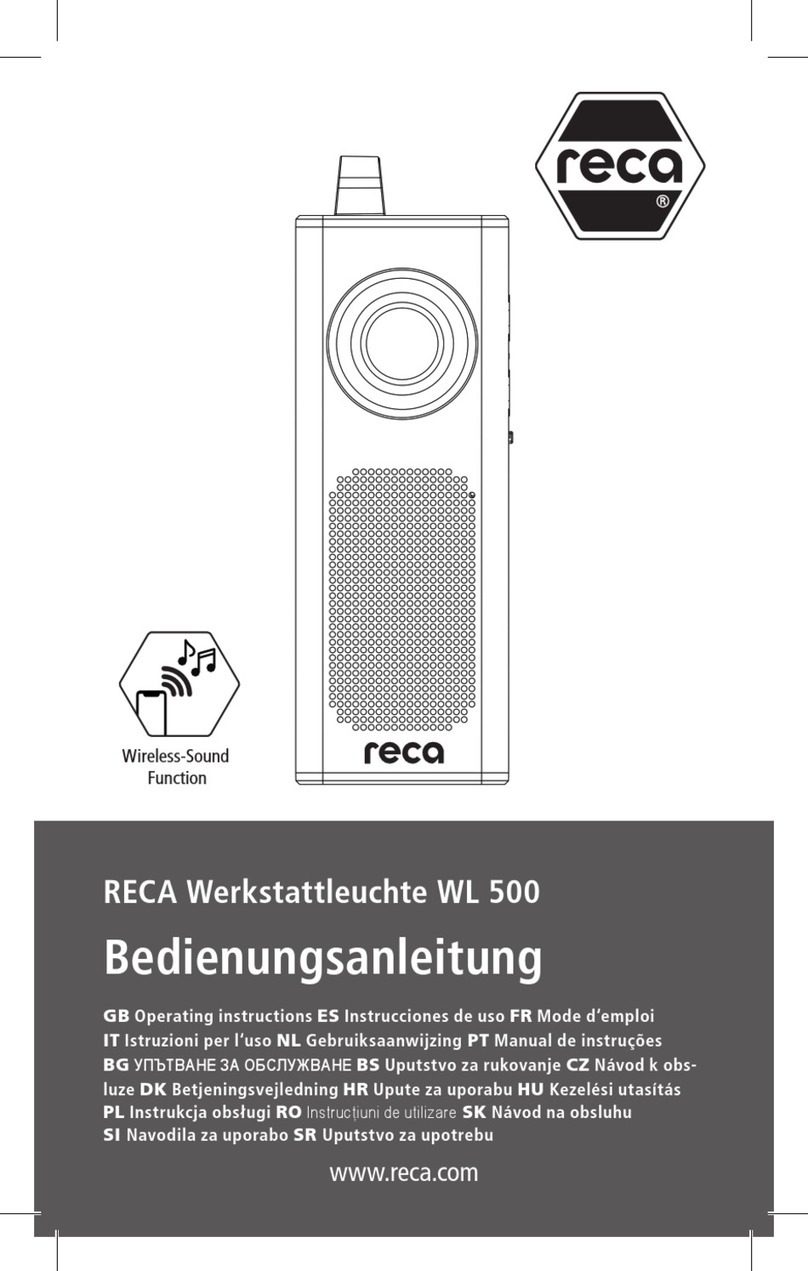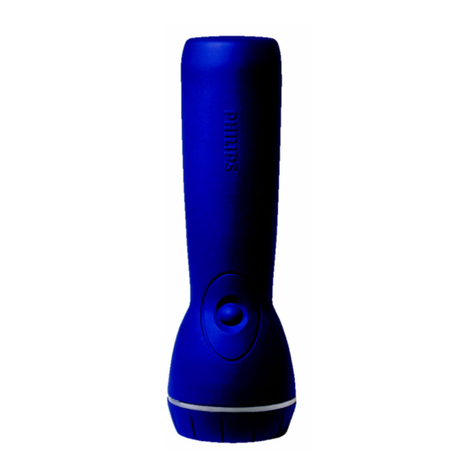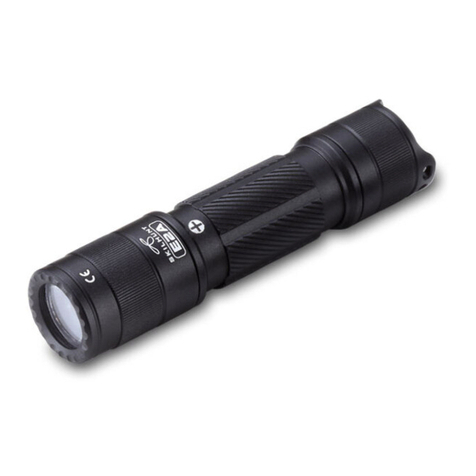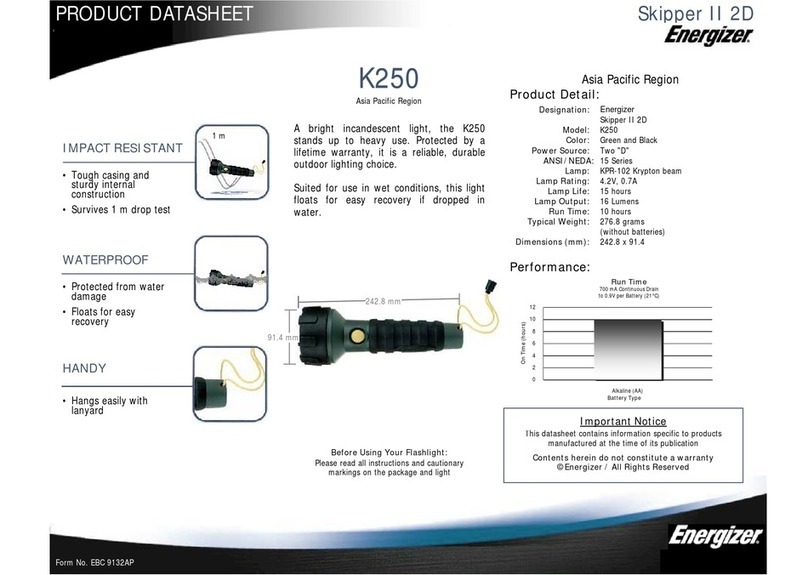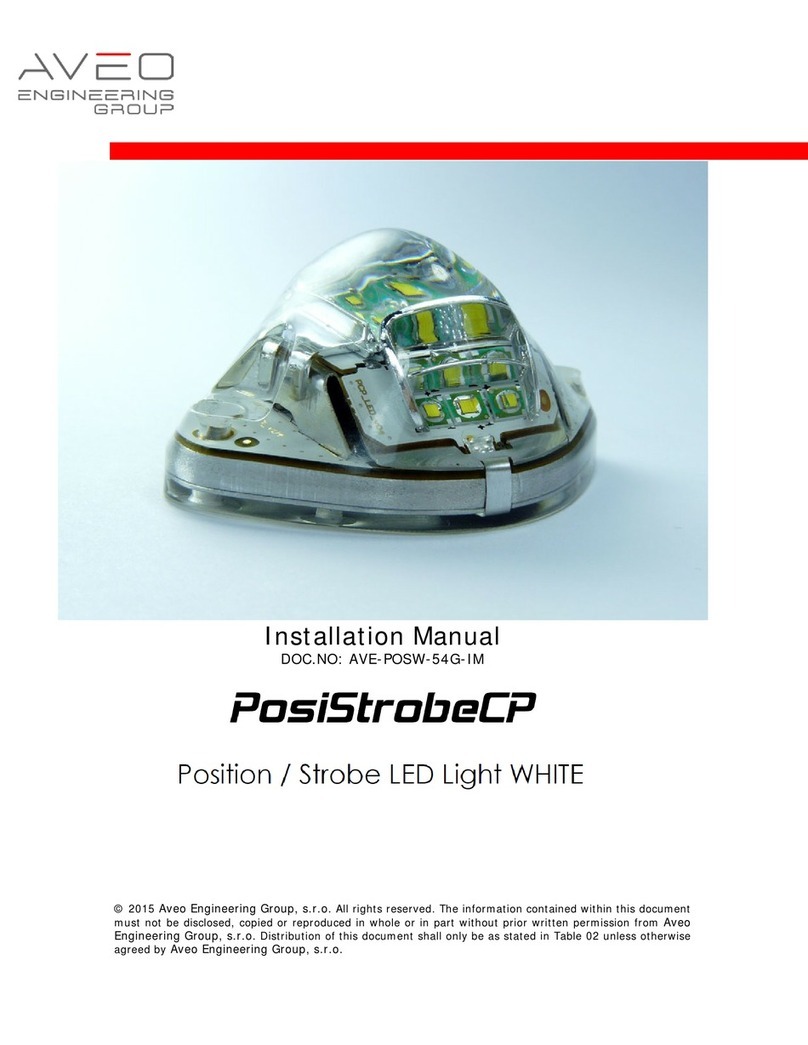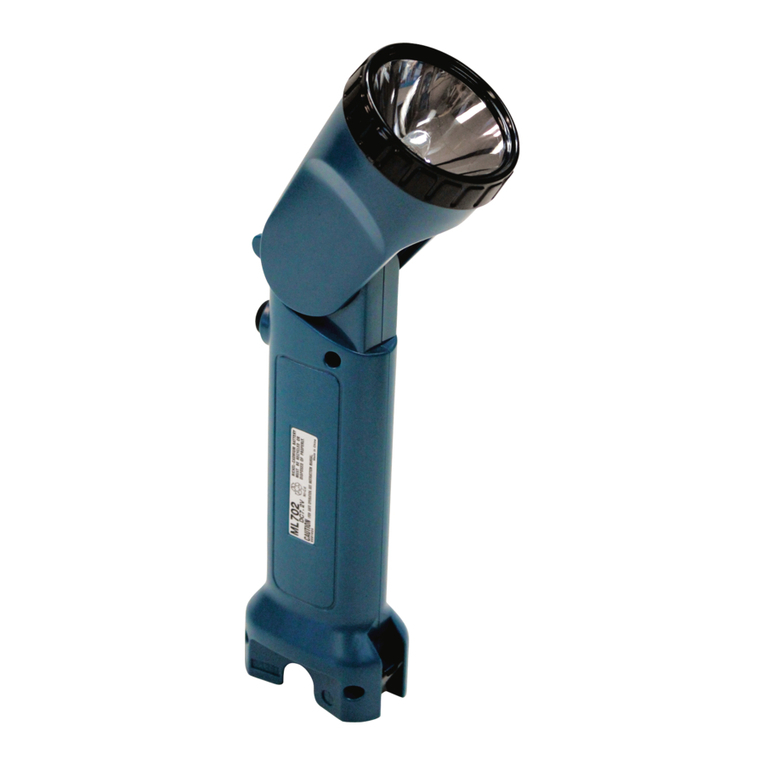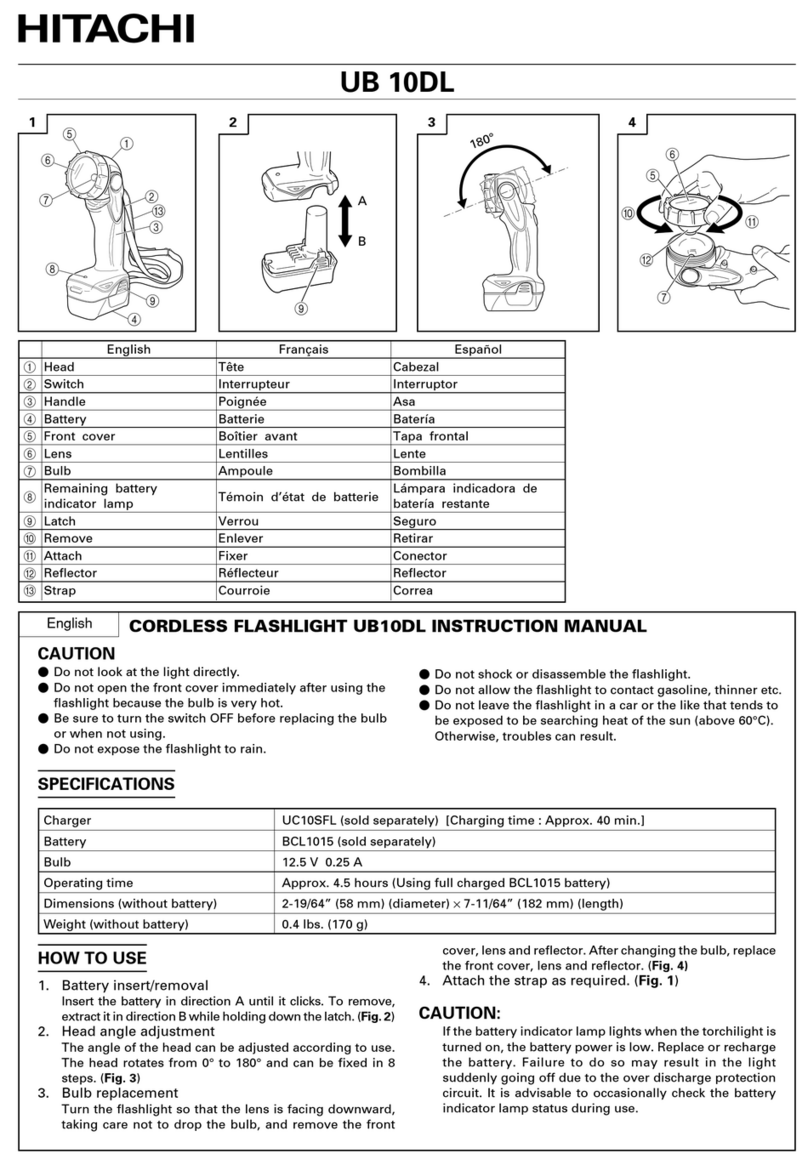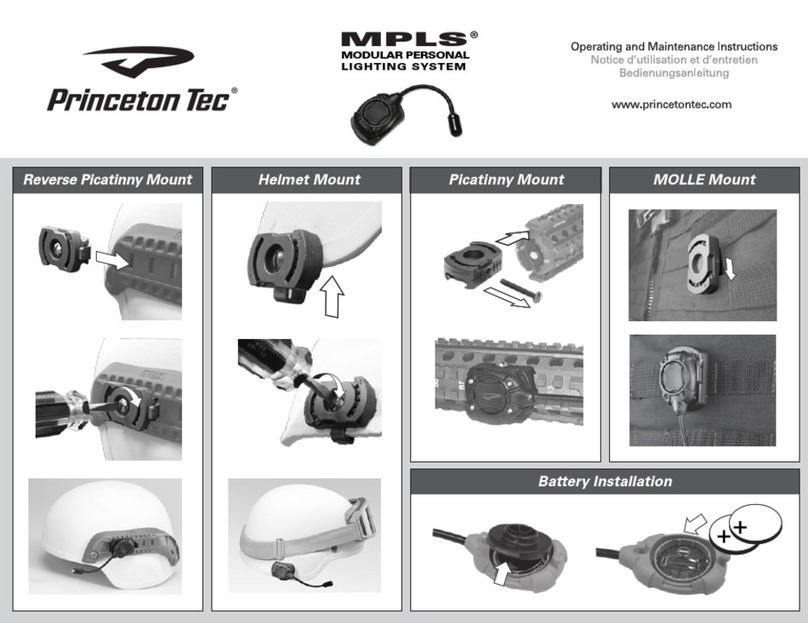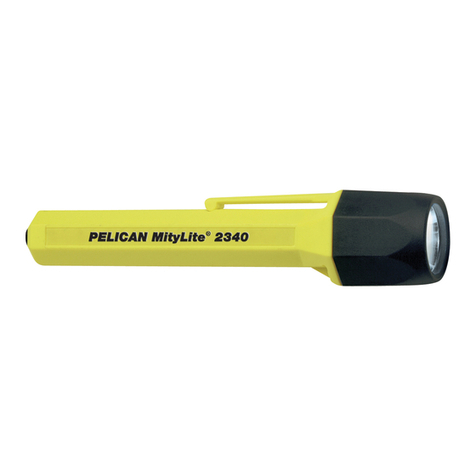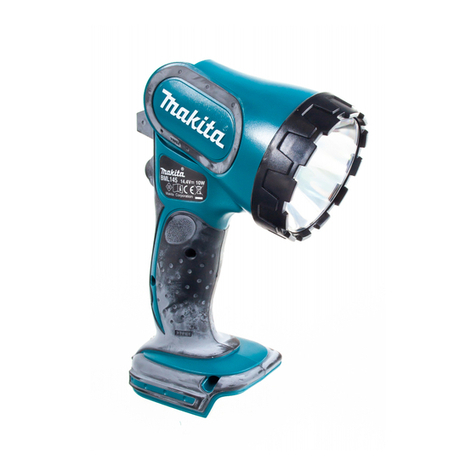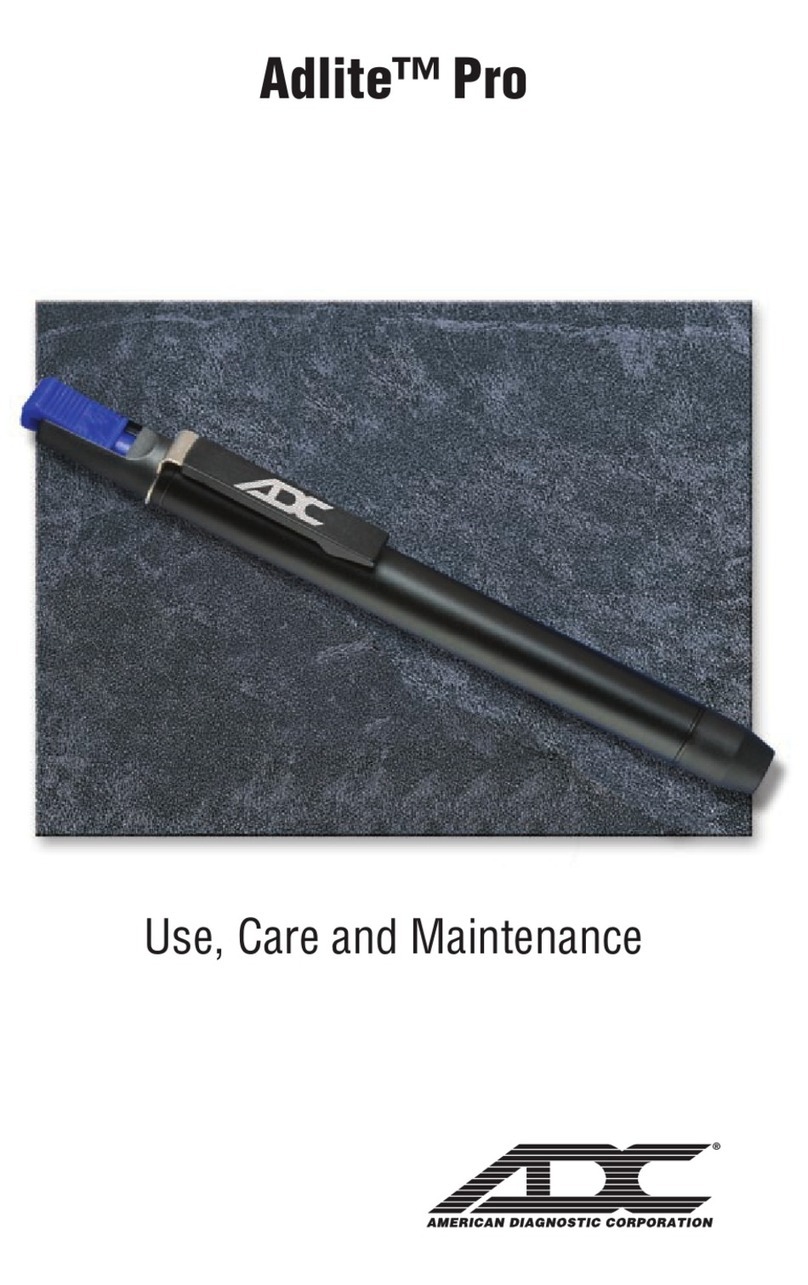Allpro SPC-500 User manual

OPERATINGINSTRUCTIONS
ANDOWNER’SMANUAL
READINSTRUCTIONSCAREFULLY:Readandfollowallinstructions.Placeinstructions
ina safeplace forfuture reference.Do notallow anyonewho hasnot readthese
instructionsto assemble,light, adjustor operatethis tool.
SPC-500
Model #
HOT SHOT
Model SPC-500
05/13 Revision L2 #72615
(Propane Torch)

2OperatingInstructionsandOwner’sManual
If you smell gas: (Under certain conditions odor may fade (Refer to page 6)
- Shut off gas to the device.
- DO NOT try to light appliance.
-Extinguishanyopenflame.
-Checkthedevice forleaksusingsoapywater.
- DO NOT attempt to relightthe deviceuntil allleaks are repairedand thereis no
gassmell.
DO NOT use this device in areas where gasoline or other
liquids having flammable vapors are stored or used.
CAUTION:
Thisdevice isintendedforoutdooruseonly.
NEVERdirecttorch flametowardhose orgas tank.
DO NOT leavetorchunattendedwhile inoperation.
DO NOT stand or prop the torch on the burner end while in operation.
Always usethe strikerprovided. Neveruse amatch orlighter toignitetorch.
DO NOT applyheatorflametotanktocheckforleaksortoincreasegaspressure.
DO NOT lifttank by the valve.
When not in use the gas should be turned off at the LPgas tank(s).
CAUTION –In daylight,torchflame isbarely visible.
DO NOT place hand or body part in the path of the flame while lighting or
operatingtorch.
Thisdeviceis designedforvaporwithdrawalfrom anLPgastank(s)ONLY.
NOTE:
Placetankon levelsurface inanupright position.
Do not invert or lay tank on its side.
Glovesshouldbe wornatall timeswhenoperatingthis device.Longsleeves,long
pants,andbootsarerecommended.
HaveanABCtypefireextinguisher readilyaccessibletothe jobsite.
Read and understand instructions before use!
Retain this information for future reference.
FORYOURSAFETY!
THESTATEOFCALIFORNIAREQUIRESTHEFOLLOWINGWARNING:
WARNING:
Combustionby-productsproducedwhenusingthisproductcontaincarbonmonoxide,
achemicalknown totheStateofCaliforniato causecancerandbirth defects(or other
reproductiveharm).

3OperatingInstructions andOwner’sManual
ITEM DESCRIPTION PARTNO.
1....................... HandleAssembly ...........72601
2....................... HoseAssembly ..............72602
3 ....................... Striker ...........................72603
SPC-500-Parts List
CAUTION:
Use only genuine SCHEU PRODUCTS replacement parts. Never substitute parts.
Do not use modified parts. When ordering replacement parts,use the part number
located in these instructions.
Whenordering repair parts, alwaysfurnish thefollowing information:
1) ModelNumber
2) PartNumber
3) PartDescription
3
1
2

4OperatingInstructions andOwner’sManual
1) Unpack all the components and inspect for any damage. If any damage is
discovered contact the delivery service or Scheu Products immediately.
2)Connect thehoseassemblyto thehandleassembly andtighten
counterclockwise.
NOTE: Thisisa left-handedthreadconnection.
Connectionto theSupply Tank:
NOTE: TheLP(LiquidPetroleum)gas tankusedwiththis deviceshouldbenolessthana
20lb. capacity. Itshouldalso meetor exceedNFPA58“Standard forthe Storage and
HandlingofLiquefiedPetroleumGases”.
1) Inspect the nut/nipple (excess shut-off valve) connection of the hose
assembly.Check for any dents or damage. The o-ring must be present. If
damage is found or the o-ring is missing call Scheu Products for the proper
replacement parts.
2) Connect the excess shut-off valve end of the host assembly to the shut-
off valve of a LP gas tank and tighten counterclockwise.
NOTE: Ifyour LPgas tankdoesnothave ashut-offvalve,exchange thetankfor
onewith a shut-off valve.
OPERATINGCHARACTERISTICS
Model BTU Operating InletPressure
TemperatureRange Range
SPC-500 500,000* -10oF to 100oF 17 psi to 170 psi
AssemblyInstructions:
Un-assembled Assembled
CAUTION:
Thisdeviceis designedforvaporwithdrawal fromanLPgastank(s)ONLY.Useofany
othergas mayresultin devicefailure orpersonalinjury.
*Tanksizeandtanktemperature candirectlyaffectBTUoutput

5OperatingInstructions andOwner’sManual
HOTSHOT
Model SPC500
Assembly, Testing &
Operating Instructions
SCHEUPRODUCTSCOMPANY
CAUTION:
DO NOT operate ifany leaksarepresent.Aleakmay createa firehazard.
DO NOT smokearound orexposesupply tank(s)to openflamesor sparks.
DO NOT apply heator flametotankto checkfor leaks.Excessheat maycausethe
supplytankto rupture,possiblycausing personalinjury.
LightingInstructions:
NOTE:Thehoseassemblyissuppliedwithanexcess flowcontrolvalve.Opening
thesupply tankshut-offvalve rapidlycancausethe valvetoclose. Iftheexcess flowvalve
closes,closethe supplytankshut-offvalve.Opentorch adjustingvalvetoreleaseany
residualgasleft inthehose.Close torch-adjustingvalveandwait 30seconds.Slowlyopen
tankshut-offvalve.
1) Makesure torchadjustingvalveisclosed.
2) Opensupply tankshut-offvalve.
3) Withtorch nozzlepointed awayfrom anyflammable material,open torch
adjustingvalve1/8th of aturn oruntil youcan hear gasescaping.
4) Igniteusing suppliedigniter.
5) Usethe torch-adjustingvalve tocontrol thesizeand heatof flame.
USE: Whenusing tool,donot directflamedirectly intowind.
Donot allowbarrelto comecloserthan 6”tothe surfacebeing heated.
Failuretodoeither ofthesethingscouldcause flameoutage.

6OperatingInstructions andOwner’sManual
WARNING
Asphyxiation Hazard
• Do not use this heater for heating human living
quarters.
• Do not use in unventilated areas.
• The flow of combustion and ventilation air must
not be obstructed.
• Proper ventilation air must be provided to support
the combustion air requirements of the heater
being used.
FUEL GAS ODOR
LP gas and natural gas have man-made odorants added specifically for detection of fuel gas leaks.
If a gas leak occurs you should be able to smell the fuel gas. Since Propane (LP) is heavier than air you
should smell for the gas odor low to the floor. ANY GAS ODOR IS YOUR SIGNAL TO GO INTO IMMEDIATE
ACTION!
• Do not take any action that could ignite the fuel gas. Do not operate any electrical switches. Do not pull any
power supply or extension cords. Do not light matches or any other source of flame. Do not use your
telephone.
• Get everyone out of the building and away from the area immediately.
• Close all propane (LP) gas tank or cylinder fuel supply valves, or the main fuel supply valve located at the
meter if you use natural gas.
• Propane (LP) gas is heavier than air and may settle in low areas. When you have reason to suspect a
propane leak, keep out of all low areas.
• Use your neighbor’s phone and call your fuel gas supplier and your fire department. Do not re-enter the
building or area.
• Stay out of the building and away from the area until declared safe by the firefighters and your fuel gas
supplier.
• FINALLY, let the fuel gas service person and the firefighters check for escaped gas. Have them air out the
building and area before you return. Properly trained service people must repair any leaks, check for further
leakages, and then relight the appliance for you.
ODOR FADING - NO ODOR DETECTED
• Some people cannot smell well. Some people cannot smell the odor of the man-made chemical added to
propane (LP) or natural gas. You must determine if you can smell the odorant in these fuel gases.
• Learn to recognize the odor of propane (LP) gas and natural gas. Local propane (LP) gas dealers will be more
than happy to give you a scratch and sniff pamphlet. Use it to become familiar with the fuel gas odor.
• Smoking can decrease your ability to smell. Being around an odor for a period of time can affect your
sensitivity to that particular odor. Odors present in animal confinement buildings can mask fuel gas odor.
•The odorant in propane (LP) gas and natural gas is colorless and the intensity of its odor can fade
under some circumstances.
• If there is an underground leak, the movement of gas through the soil can filter the odorant.
• Propane (LP) gas odor may differ in intensity at different levels. Since Propane (LP) gas is heavier than air,
there may be more odor at lower levels.
• Always be sensitive to the slightest gas odor. If you continue to detect any gas odor, no matter how
small, treat it as a serious leak. Immediately go into action as discussed previously.
ATTENTION - CRITICAL POINTS TO REMEMBER!
• Propane (LP) gas has a distinctive odor. Learn to recognize these odors. (Reference Fuel Gas Odor and Odor
Fading sections above.
• Even If you are not property trained in the service and repair of the heater, ALWAYS be consciously aware
of the odors of propane (LP) gas and natural gas.
• If you have not been properly trained in repair and service of propane (LP) gas then do not attempt to light
heater, perform service or repairs, or make any adjustments to the heater on the propane (LP) gas fuel
system.
• A periodic sniff test around the heater or at the heater’s joints; i.e. hose, connections, etc., is a good safety
practice under any
• Refer to the specification section of the heater’s
manual, heater dataplate, or contact the Scheu
Products Company to determine combustion air
ventilation requirements of the heater.
• Lack of proper ventilation air will lead to improper
combustion.
• Improper combustion can lead to carbon monoxide
poisoning leading to serious injury or death.
Symptom of carbon monoxide poisoning can
include headaches dizziness and difficulty in
breathing.
ODOR FADE WARNING

7OperatingInstructions andOwner’sManual
Shut-OffInstructions:
1) Close torch adjusting valve.
2) Close supply tank shut-off valve.
3) Open the torch-adjusting valve briefly to release any residual gas left in
the hose.
Maintenance:
Prior to each use:
1)Visually inspect all components of the device for damage and or wear. If the
hose shows excessive abrasion wear, or the hose is cut, it must be replaced
prior to operation. If damage is found, contact Scheu Products Co. for the
proper replacement parts.
2)Visually inspect LP gas tank(s) for dents, damage to collar, damage to shut-
off valveor corroded foot ring. If any of these are present the LP gas tank(s)
must be replaced prior to operation.
3)Perform a leak test according to the leak test procedure described on page 5.
4)Ignite torch according to the lighting instructions described on page 5. Check
operation of the adjusting valve and the other components prior to proceeding.
Periodically:
1)Remove any debris or combustible material from the torch. The torch must be kept
clear and free from combustible materials.
2)The surface of the device should be cleaned with soap and water. Do not use
petroleum-based or flammable cleaner on any part of the device.
Disconnecting the Supply Tank:
1)Make sure supply tank valve is shut off.
2)Open torch adjusting valve briefly to release any residual gas left in the hose.
Close adjusting valve when complete.
3)Disconnect the P.O.L. nut/nipple located at the end of the hose assembly from the
supply tank(s).
4)Replace the protective plastic cap and plug to the hose end and
supply tank(s) respectively.
CAUTION:
DO NOT smokearound orexpose supplytank(s) toopenflame orsparks.
Always usethe strikerprovided. Neveruse amatch orlighter toignite torch.Use of
deviceother thanthestrikermay causepersonalinjury.
DO NOT place hand or any body part in the path of the flame while lighting or operating
torch.Thiscanresult inpersonal injury.
CAUTION:
DO NOT smokearound orexposesupply tank(s)to openflamesor sparks.
Torchend ofhandle assemblywill increasein temperatureimmediately aftershutting off.

8OperatingInstructions andOwner’sManual
Storage:
Neverstore atorchthat isstill hot.When thetorch isstored indoors,the connection
betweenthe LPgas tank(s)andthedevice mustbedisconnected andthetank(s)removed
from the device and stored outdoors in accordance with Chapter 5 of the “Standard for the
StorageandHandling ofLiquefied PetroleumGases” ANSI/NFPA58.
NOTE:
· Storagetemperatureshallnotexceed120degreesF(49degreesC).
· Placetank onlevel surfacein anupright position.Do notinvert orlay tankon its side.
SafetyInformation:
Safetypublicationsrelated tosafepracticeanduse:
CSA2-94 “U.S.Requirementsfor HandHeldLPTorchesfor usewithfuel supply”
ANSIZ49.1 “Safety in Welding and Cutting”
NFPA54 “NationalFuel GasCode”
NFPA58 “StandardfortheStorageandHandlingofLiquefiedPetroleum Gases”
CAUTION:
DO NOT smokearound orexposesupply tank(s)to openflamesor sparks.
CAUTION:
DO NOT smokearound orexpose supplytank(s)toopen flameor sparks.
Thehoseassembly shallbeprotected fromtraffic,crushing, andhotsurfaces.Thismay
causeprematurewearofthehose.
DO NOT lift tank by the valve. Lifting the tank by the valve may result in damage to
thevalve.

9OperatingInstructions andOwner’sManual
Scheu Products Co. reserves the right to make changes at any time, without notice
or obligation, in colors, specifications, accessories, materials and models.
WARNING:
USEONLYMANUFACTURER’SREPLACEMENTPARTS.USEOFANYOTHERPARTSCOULD
CAUSEINJURYORDEATH.REPLACEMENTPARTSAREONLYAVAILABLEDIRECTFROMTHE
FACTORYANDMUSTBEINSTALLEDBYAQUALIFIEDSERVICEAGENCY.
PARTSORDERINGINFORMATION:
PURCHASING: Accessories may be purchased at any Scheu Products Co. local
dealer or direct from the factory
FORINFORMATIONREGARDINGSERVICE
Please call Toll-Free 800-325-7057
www.allpro-heaters.com
Our office hours are 7:00 AM – 4:00 PM, PT, Monday through Friday.
Pleaseinclude themodel number, dateofpurchase, anddescription ofprobleminall
communication.
OPERATINGINSTRUCTIONS
ANDOWNER’SMANUAL SPC500
Model #
LIMITEDWARRANTY
Scheu Products Co. warrants its HOT SHOT to be free from defects in material
and workmanship for a period of 90 days from date of purchase. Scheu
Products Co.will repair or replace this product free of charge if it has been
proven to be defective within the 90 day period, and is returned at customer
expense with proof of purchase to Scheu Products Co. within the warranty
period.
Table of contents

